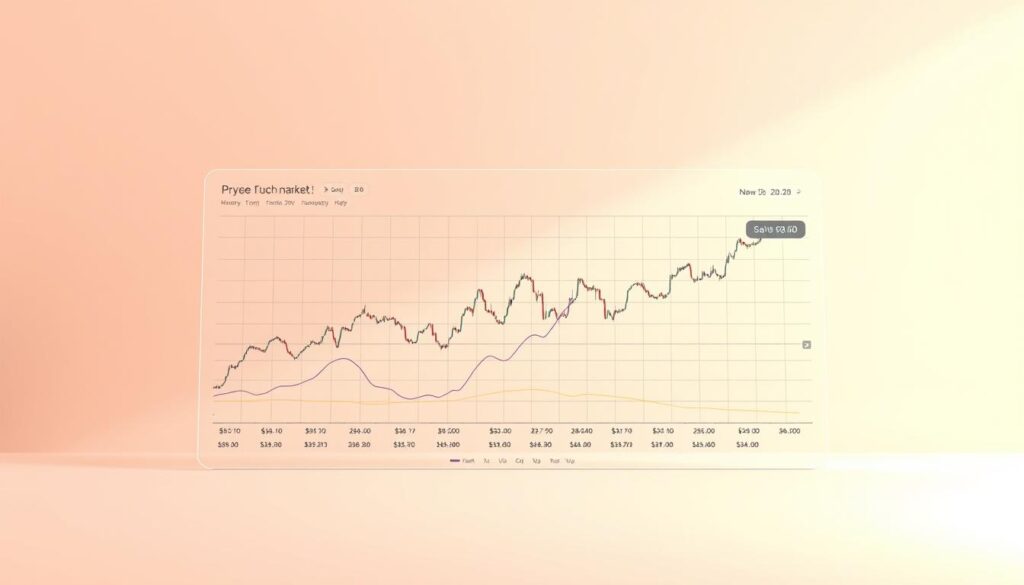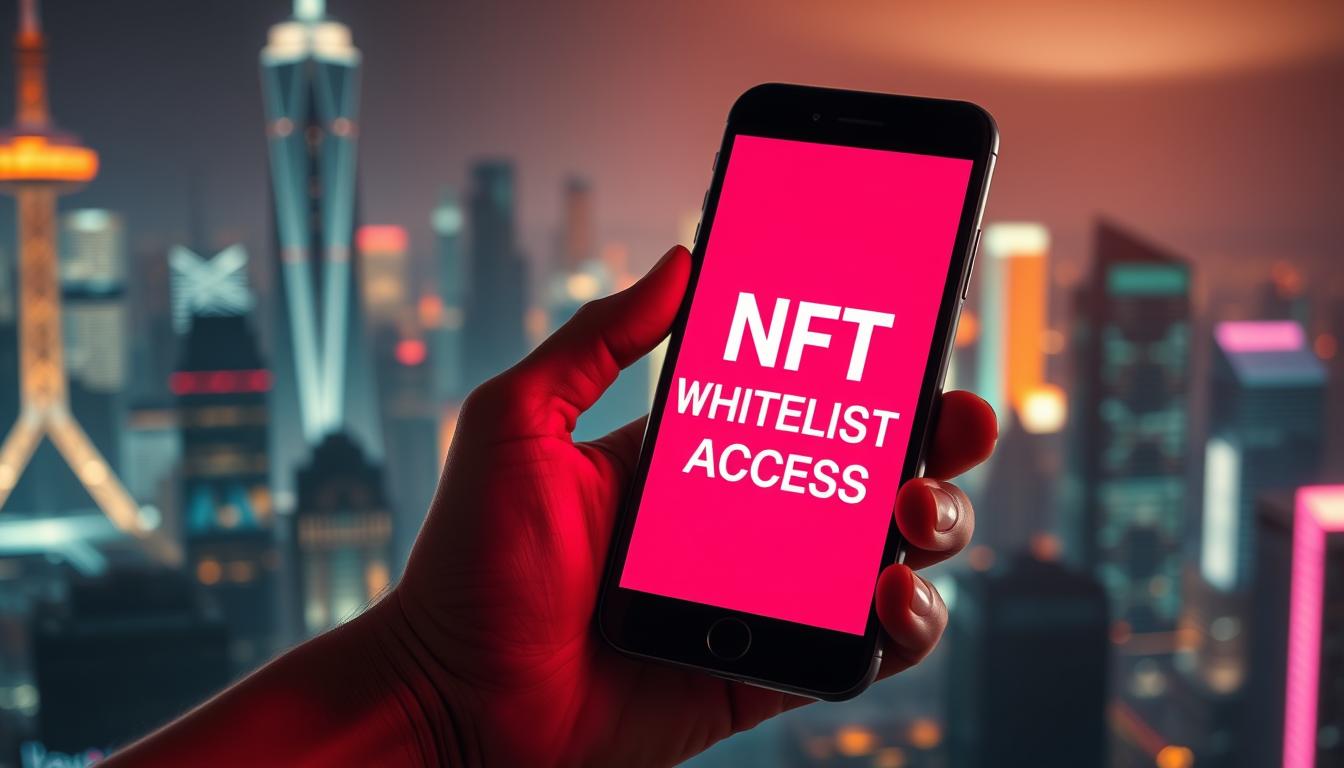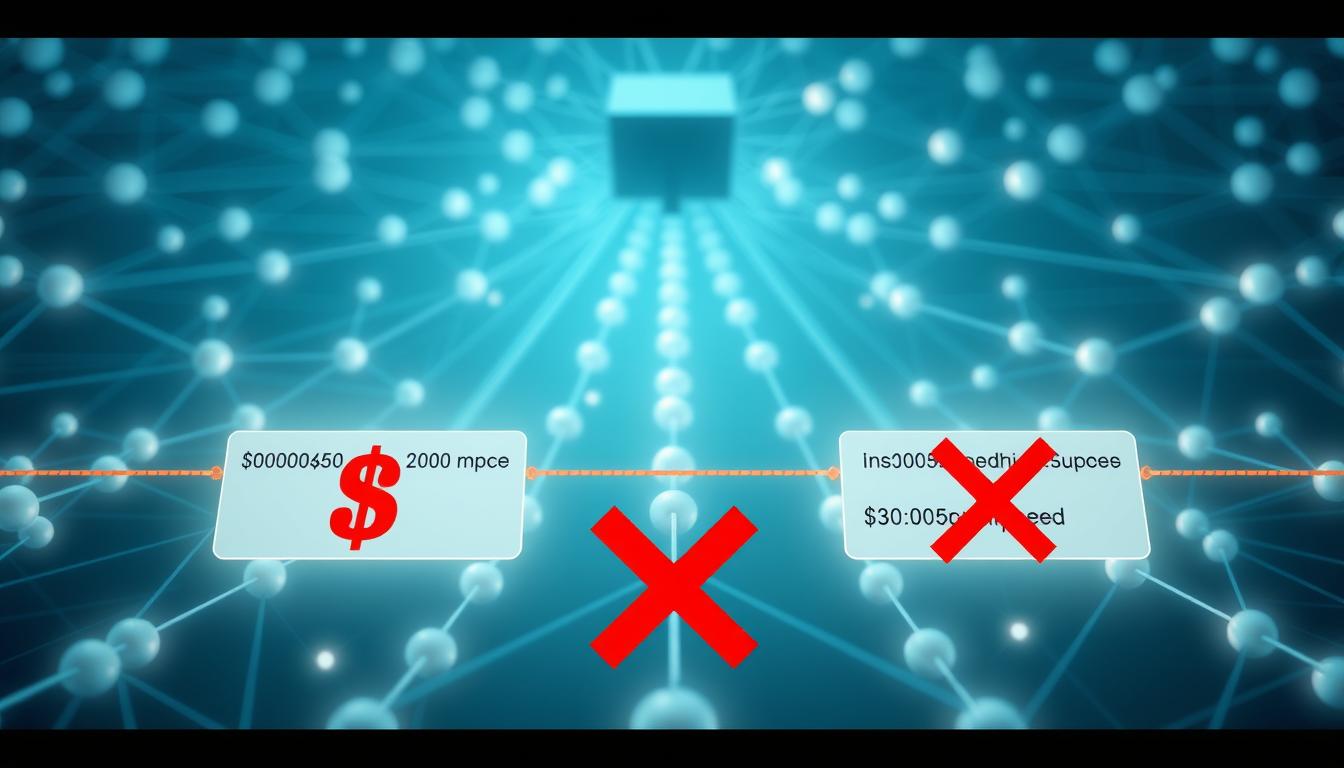Now Reading: Discover Top Web3 Crypto Projects with High Potential
- 01
Discover Top Web3 Crypto Projects with High Potential
Discover Top Web3 Crypto Projects with High Potential

The digital landscape is undergoing a profound transformation. Blockchain technology has evolved far beyond its initial purpose. It now serves as the backbone for a new era of digital interaction.
This guide explores the most promising ventures in this space. We will look at how these initiatives are driving innovation and creating new economic models. Understanding the current market trends is crucial for spotting opportunities for growth.
The shift towards a decentralized web is reshaping our digital world. This movement prioritizes user control and data ownership. It represents a significant step forward for the internet’s future.
Our goal is to provide you with a clear framework for evaluation. You will learn to identify ventures that demonstrate real potential for long-term success. This knowledge will help you navigate this exciting and dynamic sector with greater confidence.
Key Takeaways
- Blockchain is the foundational technology powering the next internet evolution.
- Decentralization and user empowerment are core principles of this new digital economy.
- Identifying promising ventures requires understanding current market and technology trends.
- This sector offers significant opportunities alongside inherent volatility.
- A strategic approach is essential for evaluating investment opportunities in this space.
- These innovations are creating new models for digital interaction and commerce.
Introduction to the World of Web3 Crypto Projects
Digital sovereignty represents the next frontier in how people interact with technology and each other. This movement shifts control from centralized corporations to individual users. People now manage their own digital identities and personal information.
Overview of Web3 and its Impact on the Crypto Market
Blockchain technology serves as the foundation for this new digital world. It enables decentralized applications and peer-to-peer transactions. This infrastructure supports various digital assets and smart contracts.
The crypto market has evolved significantly with these developments. Projects now demonstrate real utility beyond speculation. Practical use cases drive sustainable growth in this ecosystem.
| Feature | Web2 Model | Web3 Approach |
|---|---|---|
| Data Control | Centralized corporations | Individual users |
| Transactions | Intermediaries required | Direct peer-to-peer |
| Governance | Corporate policies | Community consensus |
| Infrastructure | Server-based systems | Distributed networks |
Purpose of this Guide and What to Expect
This comprehensive resource helps readers understand decentralized initiatives and their potential. We provide clear frameworks for evaluating emerging opportunities.
You’ll learn about technical foundations, market dynamics, and risk assessment. Case studies illustrate successful implementations across different sectors.
The guide emphasizes practical applications rather than theoretical concepts. Real-world examples show how this technology transforms industries.
Understanding “web3 crypto projects with high potential”
The architecture of the next-generation internet is built upon a specific set of powerful technologies. Mastering these core concepts is the first step toward making informed decisions in this dynamic sector.
Defining Key Terms: Blockchain, Tokens, and Smart Contracts
A blockchain is a shared digital record. It tracks transactions across a network of computers. This creates a secure and transparent system without a central authority.
Tokens are digital assets that live on a blockchain. They can represent ownership, provide access to services, or grant voting rights. Different types of tokens serve unique purposes within their ecosystems.
Smart contracts are self-operating agreements. The terms of the contract are written directly into code. They run automatically when specific conditions are met, removing the need for a middleman.
Together, these elements form a powerful trio. The blockchain provides the foundation. Tokens fuel the economy, and smart contracts automate the rules.
Why These Projects Are Gaining Attention in the United States
In the United States, there is growing interest in these technological developments. Major financial institutions are exploring how blockchain can improve efficiency.
American users are increasingly aware of the value of controlling their own data. This shift away from traditional platforms is a key driver of attention.
Ongoing discussions about regulatory clarity are also encouraging development. This helps build confidence in the market for investors and builders alike.
Key Trends Driving Innovation in the Web3 Ecosystem
A handful of core movements are currently shaping the trajectory of the decentralized digital ecosystem. These trends highlight a clear shift towards user empowerment and sophisticated technological integration.
Understanding these forces provides crucial insight into where the most significant innovation is occurring.

Decentralization and Data Ownership
The principle of decentralization remains the bedrock of this new ecosystem. It transfers control from centralized platforms to the users themselves.
This shift empowers individuals with true ownership of their personal data and digital assets. They can now control, monetize, and grant selective access to their information.
Integration of AI, DeFi, and NFTs
The convergence of advanced technologies is another major driver of growth. In 2025, the integration of artificial intelligence with blockchain technology has shown immense potential.
This synergy is creating intelligent systems that enhance security and personalize user experiences.
Simultaneously, decentralized finance (DeFi) continues to evolve. It now offers complex financial instruments beyond simple trading.
Non-fungible tokens (NFTs) have also expanded their use. They now represent ownership of real-world items, creating new economic models.
The most powerful development occurs when these elements combine on single platforms.
- User Control: A fundamental move from corporate data monetization to individual data sovereignty.
- Technology Fusion: AI brings automation and intelligence to blockchain-based financial systems and digital assets.
- Practical Utility: Successful projects focus on solving real-world problems, moving beyond pure speculation.
Market Analysis and Investment Insights
Current market dynamics reveal a significant shift in capital flows within the digital asset space. This environment presents unique opportunities for strategic positioning.

Recent Market Trends and Institutional Interest
The market has demonstrated strong momentum through September 2025. Bitcoin maintains a price level above $118,000, creating a favorable backdrop.
This stability often benefits alternative digital assets. Institutional involvement has reached unprecedented heights.
Recent data shows over $4.39 billion in weekly inflows into related investment products. This signals growing confidence from traditional finance entities.
Simultaneously, Bitcoin’s market dominance has declined to 56%. This metric often indicates capital rotation into other cryptocurrencies.
Many analysts suggest we are entering a period favoring smaller-cap assets. Projects with strong fundamentals may see significant growth.
| Market Indicator | 2025 Status | Implied Opportunity |
|---|---|---|
| Bitcoin Price | > $118,000 | Macro stability for altcoins |
| Institutional Inflows | $4.39B/week | Broad market validation |
| Bitcoin Dominance | 56% | Capital flow to alternatives |
Successful initiatives in this phase typically combine technical innovation and clear utility. Strong community engagement and transparent roadmaps build investor confidence.
Thorough research is key to identifying undervalued assets before broader recognition. Understanding these dynamics helps contextualize individual evaluations.
Top Case Studies: Success Stories and Promising Projects
Success stories from the blockchain space reveal patterns that distinguish sustainable projects from temporary trends. These real-world examples demonstrate how technical innovation combines with practical utility to create lasting value.

Established initiatives like Chainlink showcase the importance of solving fundamental infrastructure problems. This decentralized oracle network connects smart contracts with real-world data, serving multiple blockchain ecosystems.
Highlights from Established Projects like Bitcoin Dogs and Chainlink
Bitcoin Dogs represents groundbreaking development as the first ICO on the Bitcoin blockchain using Ordinals technology. It expands Bitcoin’s utility beyond simple value transfer.
Chainlink maintains a market capitalization exceeding $3 billion by addressing a critical protocol need. Its decentralized oracle network enables secure external data access for smart contracts across different chains.
Emerging Web3 Projects with Promising Metrics
Several newer projects demonstrate significant potential through innovative approaches. Shiba Memu integrates artificial intelligence with blockchain technology for autonomous marketing.
Bitcoin Minetrix democratizes mining access through its Stake-to-Mine model. The platform provides user-friendly dashboards for monitoring mining metrics.
Solana’s native token powers a rapidly growing ecosystem of decentralized applications. The network processes nearly 65,000 transactions per second at lower costs.
For investors seeking promising digital assets, these case studies provide valuable evaluation frameworks. They highlight the combination of technical excellence, clear utility, and strong community engagement that drives success.
Strategies for Identifying Promising Web3 Crypto Projects
A systematic approach to evaluation separates successful investors from speculators in the digital asset space. Professional platforms like Token Metrics use specific criteria to identify ventures with strong fundamentals.

Effective research begins with technical score assessment. Token Metrics requires a minimum 75% score, evaluating code quality and security implementation. This objective measurement helps filter projects with solid technological foundations.
Research Techniques and Technical Score Metrics
Beyond technical scores, comprehensive analysis examines team credentials and development activity. Consistent GitHub commits and transparent roadmaps indicate ongoing commitment. Third-party smart contract audits provide crucial security validation.
Fundamental analysis assesses whether the project addresses genuine market needs. Investors should evaluate the problem being solved and competitive advantages. Tokenomics structure and practical use cases determine long-term viability.
Portfolio management strategies recommend limiting exposure to any single venture. Professional investors allocate only 1% to early-stage projects. This approach minimizes risk while maintaining potential for substantial returns.
Community analysis completes the research picture. Organic growth signals genuine interest rather than artificial hype. These combined techniques help identify crypto initiatives with sustainable development paths.
Integrating DeFi, NFTs, and Metaverse Technologies
The most significant advancements in decentralized technology now occur at the intersection of previously separate applications. This convergence creates powerful new opportunities for users and developers alike.
How Convergence Drives Project Innovation
Decentralized finance protocols are evolving beyond basic token swaps. They now incorporate NFT collateralization, allowing digital collectibles to serve as assets for loans and liquidity.
This integration creates multifunctional platforms with enhanced utility. Users gain seamless access to financial services across different applications.
Projects like Dolomite demonstrate this convergence effectively. It combines decentralized exchange functionality with lending protocols on Arbitrum’s layer two solution.
Dolomite achieves an 85% technical score while providing capital-efficient infrastructure. The platform serves multiple financial use cases simultaneously.
| Feature | Traditional Platforms | Converged Platforms |
|---|---|---|
| Financial Services | Separate applications | Integrated ecosystem |
| Asset Utilization | Limited functionality | Cross-platform utility |
| User Experience | Multiple interfaces | Unified access |
| Innovation Potential | Incremental improvements | Exponential growth |
Real-world asset tokenization shows similar convergence benefits. Propy’s blockchain platform processes over $4 billion in real estate transactions.
The platform records property ownership onchain using smart contracts. This creates new possibilities for crypto-collateralized property loans.
Metaverse environments increasingly integrate DeFi mechanisms. Users can stake virtual land NFTs and earn yields from digital property rentals.
This technological fusion drives meaningful innovation across the entire ecosystem. It solves cross-domain challenges while creating new economic models.
Low-Cap Altcoins: Hidden Gems in the Crypto Space
Beyond the major headlines, a dynamic universe of smaller digital assets offers unique opportunities. These ventures, known as low-cap altcoins, operate with market valuations typically under $100 million.
This segment of the market presents a distinct risk-reward profile for investors.
Risk-Reward Analysis of Investment in Low-Cap Projects
The potential for significant growth is a major draw. A small market cap means even modest adoption can lead to substantial price appreciation.
However, the risks are equally pronounced. Recent analysis shows nearly half of all ventures launched since 2021 have failed.
Project abandonment and funding issues can result in a total loss. This makes thorough research absolutely critical before any investment.
Insights from Token Metrics on Emerging Altcoins
Platforms like Token Metrics use rigorous criteria to identify promising candidates. They require a technical score of at least 75% for consideration.
Promising examples include Celer Network, a layer-2 scaling protocol. It addresses critical blockchain infrastructure needs.
DIMO creates a platform for drivers to own and share vehicle data. These projects demonstrate real-world utility at a small scale.
| Feature | Low-Cap Altcoins | Established Coins |
|---|---|---|
| Market Capitalization | Under $100M | Billions of Dollars |
| Price Volatility | Typically High | Relatively Lower |
| Growth Potential | Exceptional | Moderate |
| Risk of Failure | Significant | Low |
A smart strategy involves diversification. Limit exposure to any single project to manage risk effectively while seeking growth.
Assessing Risks and Challenges in Web3 Investments
Navigating the digital asset landscape requires a clear-eyed understanding of the inherent risks involved. While the potential for growth is significant, these ventures operate in a highly dynamic and often unpredictable environment.
Acknowledging these challenges is the first step toward developing a sound investment strategy. This section examines the primary obstacles that investors may encounter.
Market Volatility and Regulatory Considerations
Market volatility is a fundamental characteristic. Price swings of 20-50% in short time frames are common, especially for smaller assets.
Low liquidity on many exchange platforms compounds this issue. It can be difficult to execute large transactions without impacting the market price.
Regulatory uncertainty remains a major concern. Governments are still defining rules for cryptocurrencies, which could impact project viability.
Security is another critical area of risk. Vulnerabilities in a blockchain protocol or on an exchange can lead to substantial losses.
Smart contract exploits and wallet compromises highlight the need for rigorous audits. Choosing projects with a strong security focus is essential.
Other significant risk factors include project abandonment and market manipulation. Smaller teams may lack funding, leading to development halts.
Low trading volumes make these assets susceptible to schemes that artificially inflate the price.
| Risk Category | Primary Challenge | Impact on Investors |
|---|---|---|
| Market & Price | Extreme volatility and low liquidity | Difficulty entering/exiting positions; rapid portfolio value changes |
| Security & Protocol | Smart contract exploits and hacks | Potential for total loss of investment from technical failure |
| Regulatory & Governance | Unclear legal frameworks and voting mechanisms | Unforeseen restrictions or unfavorable protocol changes over time |
Conclusion
Strategic positioning in innovative digital spaces combines technical understanding with market awareness. The quest for promising digital assets demands comprehensive evaluation of multiple factors.
Successful participation requires balancing growth opportunities against inherent risks. Thorough research into team capabilities, technical fundamentals, and real-world utility provides the foundation for sound decisions.
The evolving ecosystem rewards disciplined investors who prioritize sustainable development over speculative momentum. Continuous learning and adaptation remain essential for navigating this dynamic landscape.
As recognition of decentralized technologies expands across sectors, those who maintain realistic expectations and rigorous standards will be best positioned for long-term success.
FAQ
What exactly is a Web3 project?
A Web3 project is built on blockchain technology, aiming to create a decentralized internet. These platforms give users control over their data and assets, moving away from centralized systems. They often use tokens for governance and transactions within their ecosystem.
How do I research a Web3 project’s potential?
Strong research is key. Look at the project’s technology, use cases, and the team’s experience. Check the tokenomics, including the total supply and distribution. Analyze the community growth and development activity on platforms like GitHub.
What role do smart contracts play in these projects?
Smart contracts are self-executing contracts with terms directly written into code. They are the backbone of many Web3 applications, automating transactions and enabling complex functions in DeFi and NFT platforms without intermediaries.
Why is there so much interest in DeFi projects?
DeFi, or decentralized finance, offers open access to financial services like lending and borrowing. It removes the need for traditional institutions, potentially offering higher yields and greater access. This innovation is a major driver of growth in the crypto space.
What are the biggest risks when investing in these assets?
The primary risks include high market volatility, regulatory uncertainty, and security vulnerabilities. The value of cryptocurrencies can change rapidly. It’s crucial to only invest what you can afford to lose and prioritize security for your assets.
Are low-cap altcoins a good investment?
Low-cap altcoins can offer high growth potential but come with significant risk. They are often more volatile and less established. A thorough risk-reward analysis, examining the project’s metrics and token data, is essential before considering an investment.
How is the metaverse connected to Web3?
The metaverse is a vision for a collective virtual space. Web3 provides the infrastructure, using blockchains and tokens to establish digital ownership of assets like virtual land and NFTs. This convergence creates new use cases for technology.















